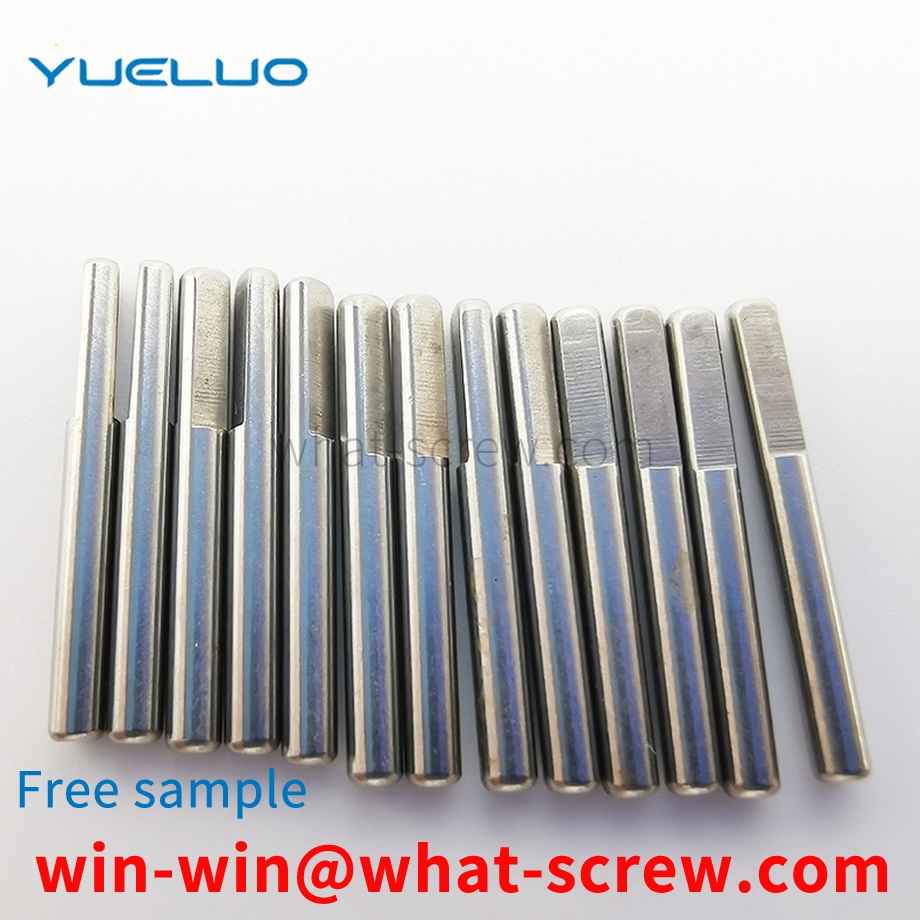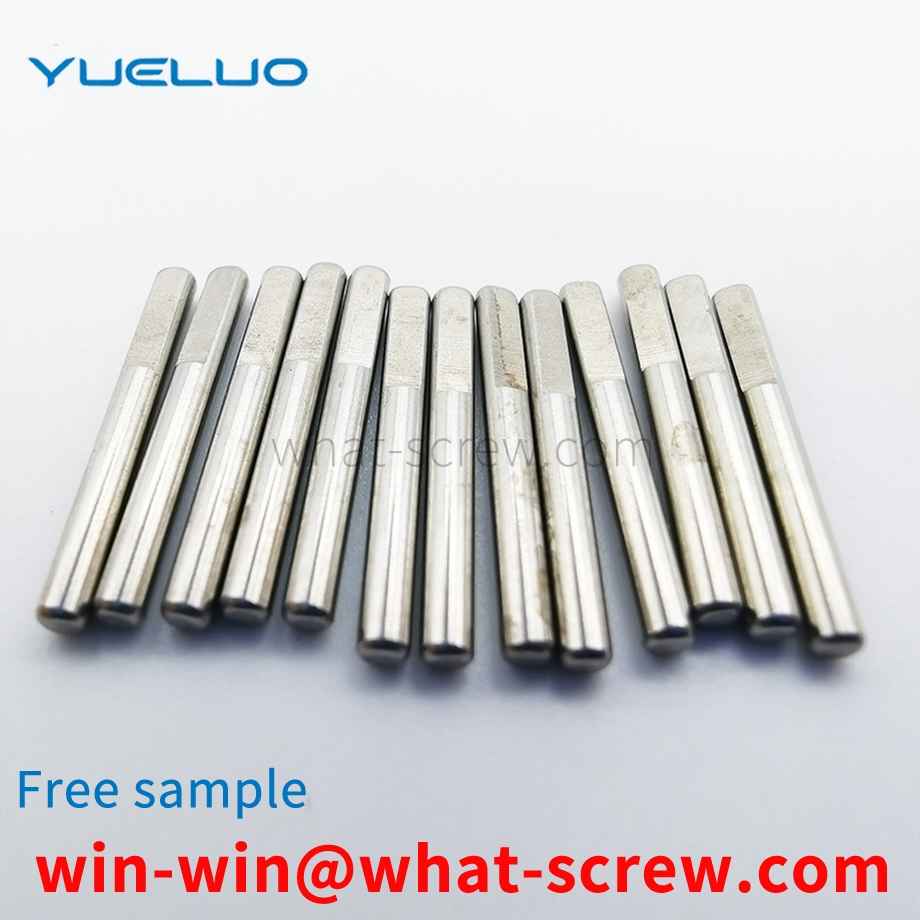In order to solve the above-mentioned technical problems, a technical scheme adopted by Guangdong Yueluo Hardware Industry Co., Ltd. is: a rivet capable of selecting a breaking point is provided, comprising a nail body and a mandrel, and the mandrel is sequentially provided with from the head to the tail. Hemispherical head, cone and cylinder, the cones are provided with at least three, the mandrel penetrates into the nail body from the bottom of the nail body, and then goes out from the head of the nail body, the hemispherical head and the cylinder Exposed on the bottom of the nail body and the outside of the head, the cones are all arranged inside the nail body.
Existing wood screws are composed of a threaded portion with a tapered angle and arranged along a tapered stem and a screw head. The head of the screw can be a countersunk head, hemispherical, or other shapes, and the head of the screw has a groove that fits with the tool, a word groove, and a concave cross groove. The taper angle of existing wood screws is either 45 degrees or 60 degrees, and the front end of the taper angle is a pointed point formed by a rotating thread. The existing wood screws have the following three deficiencies in use. Because the taper angle is 45 degrees or 60 degrees, and the thread angle is 64 degrees, the resistance when entering the material is relatively large, so the existing wood screws are manually screwed. It is difficult to screw in, especially when it is used for hardwood materials, and it often happens that the groove of the screw head is screwed out; A large lateral moment will be formed when the screw is screwed, which is prone to the problem of deviation from the position; in addition, because the existing screw is tapered, it will be subjected to both radial force and axial force when entering the material, and its stress state It is more complicated, so it is easy to cause the cracked wood material to burst, and even cause the material to have longitudinal cracks and be unusable.
Generally speaking, the metal plate needs to open holes for inserting the rivets, and then press the two sides of the metal plate along the positive direction of the metal plate with a jig, so that the metal plate is deformed in the plane direction, which makes the inner edge of the hole Shrink and fit the rivet. Existing riveting techniques are not suitable for thin sheets. Because the thin plate does not have enough thickness to compress in its forward direction, the insufficient deformation in the forward direction causes enough deformation in the plane direction to insert the rivet, so the rivet cannot be firmly fixed to the thin plate.
The technical solution adopted by Guangdong Yueluo Hardware Industry Co., Ltd. to solve its technical problems is a special pull rivet for railway freight cars, which has a pull rivet body and a collar. The rod body is composed of polished rod section, locking ring groove section and tail thread section from top to bottom. Protectors are provided at the tail thread section to prevent rust and bad teeth in the tail thread section during use. , collision deformation, etc. Specifically, the tail thread segment has an external thread or an internal thread, and the protective member is a nut or a bolt.
The bolt thread is generally cold worked, so that the thread blank within a certain diameter range passes through the rubbing (rolling) wire plate (die), and the thread is formed by the pressure of the wire plate (rolling die). The plastic streamline of the threaded part is not cut off, the strength is increased, the precision is high, and the quality is uniform, so it is widely used. In order to make the outer diameter of the thread of the final product, the required thread blank diameter is different, because it is limited by factors such as thread accuracy and whether the material is coated or not. Rolling (rubbing) thread is a processing method that uses plastic deformation to form thread teeth. It uses a rolling (screwing plate) die with the same pitch and tooth shape as the thread to be processed, while extruding the cylindrical screw blank, while rotating the screw blank, and finally transferring the tooth shape on the rolling die to the On the screw blank, the thread is formed. The common point of rolling (rubbing) thread processing is that the number of rolling revolutions does not need to be too much. If it is too much, the efficiency will be low, and the surface of the thread teeth will easily cause separation or random buckle. On the contrary, if the number of revolutions is too small, the diameter of the thread is easy to be out of round, and the pressure at the initial stage of rolling increases abnormally, resulting in a shortening of the life of the die. Common defects of rolled threads: cracks or scratches on the surface of the thread part; random buckles; out of roundness of the thread part. If these defects occur in large numbers, they will be discovered during the processing stage. If the number of occurrences is small, the production process does not notice these defects and then circulates to users, causing trouble. Therefore, the key issues of processing conditions should be summarized, and these key factors should be controlled in the production process.
We have many years of experience in the production and sales of screws, nuts, flat washers, etc. The main products are: hexagonal copper column sets, Q192 screws, color zinc threaded nuts with washers, external hexagonal wall screws and bolts and other products, we can provide you with The right fastener solution for you.



















 Service Hotline
Service Hotline




